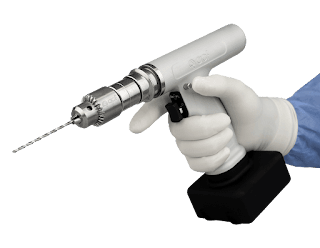Precision in Motion: The Evolution of Surgical Drills in Modern Medicine
Introduction:
Throughout the annals of medical history, the quest for precision has been a driving force behind advancements in surgical procedures. One key tool that exemplifies this pursuit is the surgical drill. From its humble beginnings as a manually operated instrument to the state-of-the-art, high-tech devices of today, surgical drills have evolved significantly, revolutionizing the field of modern medicine. This blog takes you on a journey through the remarkable evolution of surgical drills and how they have become the epitome of precision in motion.
The Genesis of Precision: Early Surgical Drills
The origins of surgical drilling can be traced back to ancient civilizations, where primitive hand-cranked drills were used for trepanation and bone surgery. Although rudimentary, these early tools laid the foundation for precision-based medical interventions, paving the way for more sophisticated advancements in the future.
The Industrial Revolution and the Birth of Modern Drills
The advent of the Industrial Revolution in the 18th century brought significant advancements in manufacturing techniques. This period witnessed the emergence of mechanized surgical drills, powered by steam or compressed air. These drills marked a significant leap forward in surgical precision, enabling faster and more accurate procedures.
Electric Drills: Electrifying the World of Surgery
The 20th century witnessed a groundbreaking transformation with the introduction of electrically powered surgical drills. Lightweight, easy to maneuver, and equipped with variable speed settings, electric drills became a standard tool in operating rooms worldwide. This shift not only increased precision but also minimized fatigue for surgeons during lengthy procedures.
From Macro to Micro: Minimally Invasive Drills
With the advent of minimally invasive surgery (MIS), surgical drills had to adapt to meet the demands of delicate and precise procedures. Minimally invasive drills, equipped with slender shafts and specialized tips, allowed surgeons to access internal structures through small incisions with minimal disruption to surrounding tissues. These advanced drills revolutionized surgical outcomes, leading to reduced recovery times and improved patient experiences.
Precision Redefined: Computer-Assisted and Robotic Drills
As technology soared to new heights, so did the precision of surgical drills. Computer-assisted and robotic surgical systems have redefined the concept of precision in modern medicine. With real-time imaging, intraoperative navigation, and robotic-assisted movements, these drills offer unparalleled accuracy and efficiency, empowering surgeons to perform intricate procedures with enhanced dexterity and control.
Conclusion:
The evolution of surgical drills from simple hand-cranked instruments to cutting-edge, computer-assisted robotic systems showcases the relentless pursuit of precision in modern medicine. As these remarkable devices continue to advance, they contribute significantly to improved surgical outcomes, reduced patient recovery times, and enhanced patient safety. The journey of surgical drills is a testament to the indomitable spirit of innovation, driving the medical community forward into a future where precision in motion is not just an aspiration but a standard expectation in every operating room worldwide.




Comments
Post a Comment